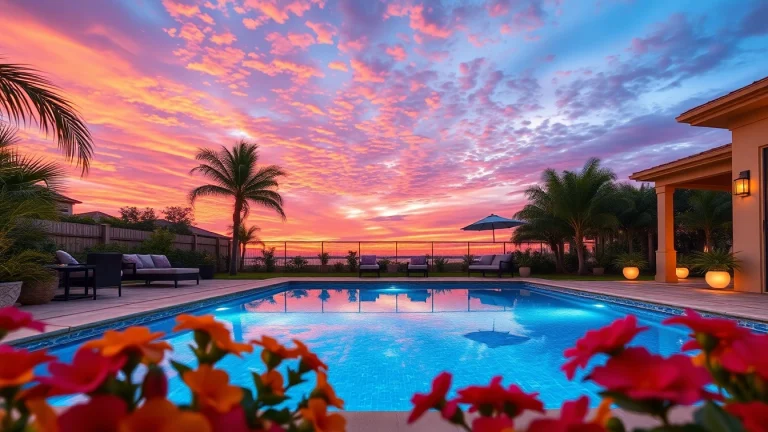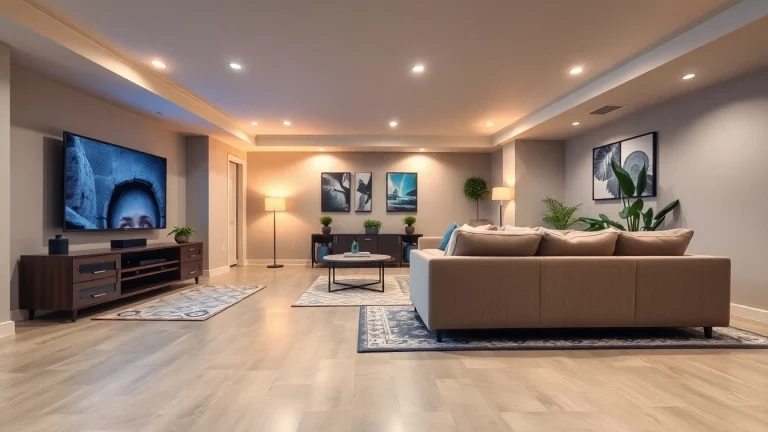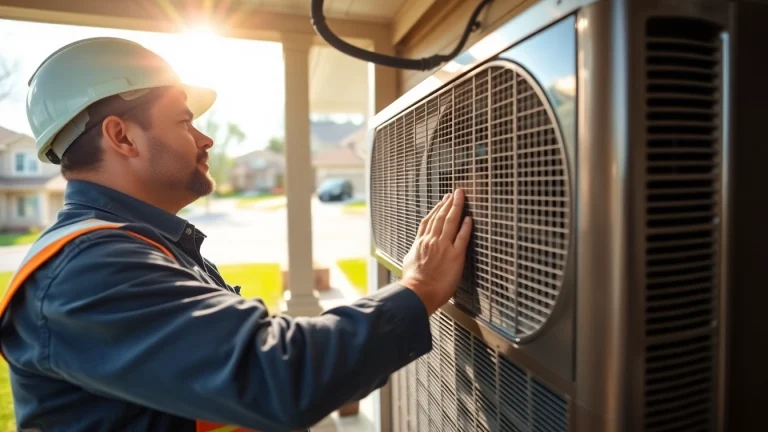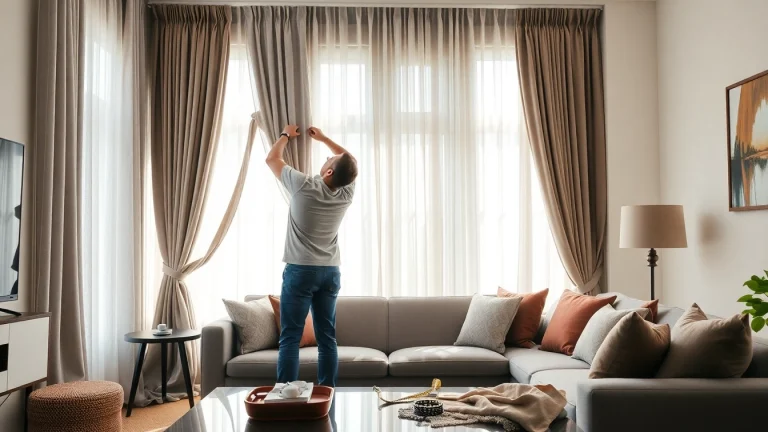
Professional Swimming Pool Installation: Create Your Dream Oasis in Your Backyard
Understanding Swimming Pool Installation: Types and Benefits
Installing a swimming pool can transform your backyard into a sanctuary for relaxation, fun, and entertainment. Whether you envision hosting summer barbecues, family gatherings, or enjoying a calming evening swim, the process begins with understanding the various types of swimming pools available and the benefits they offer. This comprehensive guide will discuss everything from swimming pool installation types to the factors influencing your choice.
Inground vs. Above Ground Pools
When considering a swimming pool installation, one of the first decisions is between inground and above ground pools. Both options have unique advantages, depending on budget, space, and desired aesthetics.
Inground Pools
Inground pools are permanently installed structures that generally offer more customization options. They can be made from materials like concrete, fiberglass, or vinyl. Inground pools are popular for their durability and the luxurious appeal they bring to residential properties. However, they come with a higher price tag, often ranging from $20,000 to $120,000, depending on the material and any additional features, such as waterfalls or lighting.
Above Ground Pools
Above ground pools, on the other hand, are typically less expensive and easier to install. They require less maintenance and can be dismantled if necessary. The average cost for an above ground pool is significantly lower, often ranging from $1,500 to $5,000. While they may not provide the same aesthetic value as inground pools, they can still offer a fun and enjoyable swimming experience, making them a popular choice for families on a budget.
The Benefits of Installing a Pool
Choosing to install a swimming pool can enhance your home in numerous ways:
- Increased Property Value: A well-maintained pool can add significant value to your home. Potential buyers often view pools as a desirable feature, especially in warmer climates.
- Personal Relaxation: A swimming pool provides an ideal setting for relaxation, encouraging a lifestyle centered around health and wellness.
- Family Bonding: Having a pool in your backyard creates a gathering space for family and friends, fostering togetherness and lasting memories.
- Enhanced Lifestyle: Pools offer various recreational opportunities, from swimming to pool parties, making them a hub of activity.
Choosing the Right Materials for Your Pool
The materials used in constructing your swimming pool significantly impact its durability, aesthetic appeal, and cost. Below are some commonly used materials:
- Concrete: Although concrete pools offer the highest levels of customization, they require more maintenance and can incur higher costs initially.
- Fiberglass: Fiberglass pools come pre-formed, making installation quicker. They are low maintenance and resistant to algae growth but have limited design options.
- Vinyl: Vinyl liner pools are customizable and offer a softer texture, but vinyl liners need to be replaced every 5-9 years, which adds to the long-term cost.
Planning Your Swimming Pool Installation
A successful swimming pool installation requires proper planning. Here are crucial steps you should consider:
Assessing Your Space and Design Preferences
Evaluate your yard’s layout and size to determine the best placement for your pool. Consider essential factors such as sunlight exposure, privacy, and accessibility. You might also want to think about how to integrate landscaping and decking into your design to enhance the overall visual appeal.
Permits and Local Regulations for Installation
Before starting your project, it’s important to check local regulations related to swimming pool installations. Different states and local governments have specific building codes that must be adhered to, which may include fencing requirements and zoning laws. Obtaining the necessary permits is crucial to avoid legal issues down the line.
Setting a Realistic Budget for Your Project
Having a concrete budget is vital for any construction project. Factors that can influence your budget include the type of pool you choose, materials, labor, permits, and additional features like landscaping or lighting. It’s wise to set aside some extra funds for unforeseen expenses, which are common in renovation projects.
The Swimming Pool Installation Process
The swimming pool installation process can seem daunting, but breaking it down into manageable steps will ease any concerns.
Step-by-Step Guide to Pool Installation
While the exact installation process can vary depending on the type of pool, here’s a generalized step-by-step guide:
- Design Consultation: Meet with your pool contractor to discuss design options and features.
- Site Preparation: The area will be cleared and leveled to create a foundation for the pool.
- Pool Construction: Excavation begins, followed by the installation of the pool framework, plumbing, and electrical systems.
- Finishing Touches: Install the pool liner if applicable, and add decking, coping, and landscaping.
- Refill and Test: Fill the pool with water, balance chemicals, and test all equipment to ensure proper functionality.
Common Challenges and How to Overcome Them
Even with careful planning, installation can face challenges such as weather delays, unexpected site conditions, or materials shortages. Here are strategies to mitigate these issues:
- Flexibility: Keep a flexible timeline to accommodate potential delays.
- Choose Experienced Contractors: Experienced contractors can often foresee and address challenges proactively.
- Regular Communication: Maintain constant communication with your contractor for updates on progress and any potential setbacks.
Choosing the Right Installation Team
Selecting the right professionals for your installation is crucial. Look for licensed contractors who have experience with the type of pool you want. Request references and view previous work to gauge quality.
Maintaining Your Swimming Pool Post-Installation
Once your pool is installed, maintenance becomes paramount to ensure it remains a pleasant aspect of your home. Here are key tips for keeping your pool in top shape.
Regular Maintenance Routines to Keep Your Pool Clean
Establish a regular cleaning schedule that includes:
- Skimming the Surface: Remove debris regularly with a skimmer.
- Vacuuming: Vacuum the bottom of the pool weekly to remove dirt and algae.
- Checking Chemical Levels: Test and balance chemicals, checking pH and chlorine levels, ideally once a week.
Seasonal Considerations for Pool Care
As seasons change, so do the maintenance needs of your pool. Prepare your pool for winter by ensuring it’s properly closed and covered. In spring, conduct a thorough cleaning and inspection to prepare for swimming season.
Upgrading Features: Adding Accessories and Enhancements
Once you have a swimming pool, you may want to upgrade. Consider adding features such as:
- Heating Options: Heaters can extend your swimming season, allowing you to enjoy your pool longer.
- Lighting: Underwater lights can add a stunning effect during evening swims.
- Waterfalls and Fountains: Enhancements like these can increase not only the aesthetic appeal but also the enjoyment of your pool experience.
Helpful Tips for a Successful Swimming Pool Installation
To ensure your swimming pool installation and subsequent maintenance is smooth, here are some actionable tips:
Addressing Common Questions and Concerns
Potential pool owners often have many questions. Common concerns include:
- How long does installation take? It varies significantly based on the pool type and complexity of the installation, but generally, expect anywhere from a few weeks to a few months.
- Is a pool worth the investment? While pools can require maintenance and initial investment, they often increase property value and provide significant enjoyment.
Best Practices for Pool Safety
Safety should always be a priority. Implement safety measures such as:
- Fencing: Install a fence around your pool to prevent unauthorized access.
- Pool Cover: A pool cover can prevent accidents and keep debris out during off-seasons.
- Life-Saving Equipment: Keep rescue equipment accessible, such as flotation devices and a first aid kit.
Maximizing Your Outdoor Space with Design Tips
To enhance the beauty of your backyard, integrate your pool design with your landscaping. Adding flowers, trees, or a patio can create a complete outdoor experience. Incorporate seating areas nearby for relaxation, making your pool a centerpiece for entertainment and enjoyment.


